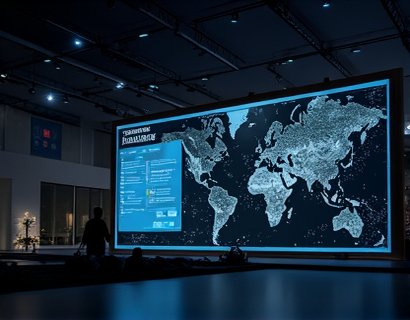Streamlining Web Development: The Power of Placeholder Website Code Generators
In the fast-paced world of web development, efficiency and creativity are paramount. For developers, designers, and business owners, the challenge lies in creating visually appealing and functional websites without sacrificing time or resources. This is where the concept of a placeholder website code generator comes into play, offering a revolutionary solution to streamline the development process. This comprehensive guide delves into the benefits and functionalities of these tools, tailored for web professionals and businesses aiming to optimize their online presence.
Understanding Placeholder Website Code Generators
Placeholder website code generators are sophisticated tools designed to create mock websites using pre-defined templates and code snippets. These generators allow users to quickly set up a basic website structure, complete with dummy content, images, and layout designs. The primary goal is to provide a realistic preview of the final website, enabling developers and designers to focus on the creative and technical aspects of the project without getting bogged down by the initial setup.
Key Benefits for Developers and Designers
One of the most significant advantages of using a placeholder code generator is the time savings. Instead of manually coding each element, developers can generate a functional base in minutes. This efficiency is crucial for digital agencies and tech startups that often juggle multiple projects simultaneously. By automating the initial setup, these tools allow teams to allocate more time to innovation and customization.
Moreover, placeholder generators enhance collaboration within teams. Designers can share a live preview with stakeholders, receiving immediate feedback and making adjustments on the fly. This real-time collaboration streamlines the design-to-development process, reducing miscommunications and ensuring everyone is on the same page.
Enhancing User Experience with Placeholder Content
Placeholder content, while not the final product, serves a vital role in testing and refining the user experience. It helps in evaluating layout, typography, and overall design coherence. For e-commerce businesses, placeholder product listings and shopping cart functionalities can simulate a real shopping experience, allowing for thorough testing of user flows and conversion paths.
Additionally, placeholder images and text can be customized to reflect the brand's aesthetic even before the actual content is ready. This early visualization aids in making informed design decisions and ensures a cohesive user experience from the outset.
Tools and Features for Effective Placeholder Generation
Modern placeholder code generators offer a range of features to cater to diverse needs. Customizable templates are a cornerstone, allowing users to select from various industry-specific designs or create their own. This flexibility ensures that the generated placeholder aligns with the project's vision and brand identity.
Another essential feature is the ability to integrate placeholder code with popular frameworks and libraries such as Bootstrap, Foundation, and React. This integration simplifies the development process, as developers can leverage existing components and styles, further speeding up the development timeline.
Responsive design is also a critical aspect. Top-tier generators ensure that the placeholder website adapts seamlessly across different devices and screen sizes, providing a consistent user experience whether accessed on a desktop, tablet, or mobile device.
Use Cases Across Various Industries
The versatility of placeholder code generators makes them invaluable across multiple sectors. For digital agencies, these tools accelerate project delivery, allowing agencies to take on more clients without compromising on quality. Tech startups, often working with limited resources, can use these generators to quickly prototype and validate their ideas before investing in full-scale development.
E-commerce businesses benefit significantly from placeholder generators, as they can rapidly set up product pages, checkout processes, and user accounts for testing purposes. This expedited process helps in identifying and fixing issues early, leading to a smoother launch and better customer satisfaction.
Marketing professionals can utilize placeholder websites to demonstrate concepts to clients, showcasing potential landing pages, blog layouts, and other digital assets. This visual proof is crucial for gaining client approval and ensuring the final product meets expectations.
Best Practices for Using Placeholder Code Generators
To maximize the benefits of placeholder code generators, it's essential to follow best practices. First, choose a generator that offers a wide range of customization options to ensure the placeholder closely mirrors the final design. This includes selecting appropriate fonts, color schemes, and layout configurations.
Second, utilize placeholder content strategically. While dummy text and images are useful for initial testing, it's important to plan how the real content will integrate once available. Consider the structure and hierarchy of the content to maintain consistency when switching from placeholder to live data.
Lastly, keep the generated code organized and well-documented. This practice facilitates easier maintenance and collaboration, especially in team environments where multiple members may be working on different aspects of the project.
Conclusion
Placeholder website code generators represent a significant advancement in web development, offering unparalleled efficiency and creativity. By streamlining the initial setup process, these tools enable developers, designers, and business owners to focus on what truly matters: creating exceptional online experiences. Whether you're part of a bustling digital agency, a growing tech startup, or an e-commerce entrepreneur, incorporating a placeholder code generator into your workflow can lead to faster project completion, higher quality outcomes, and greater client satisfaction.











































